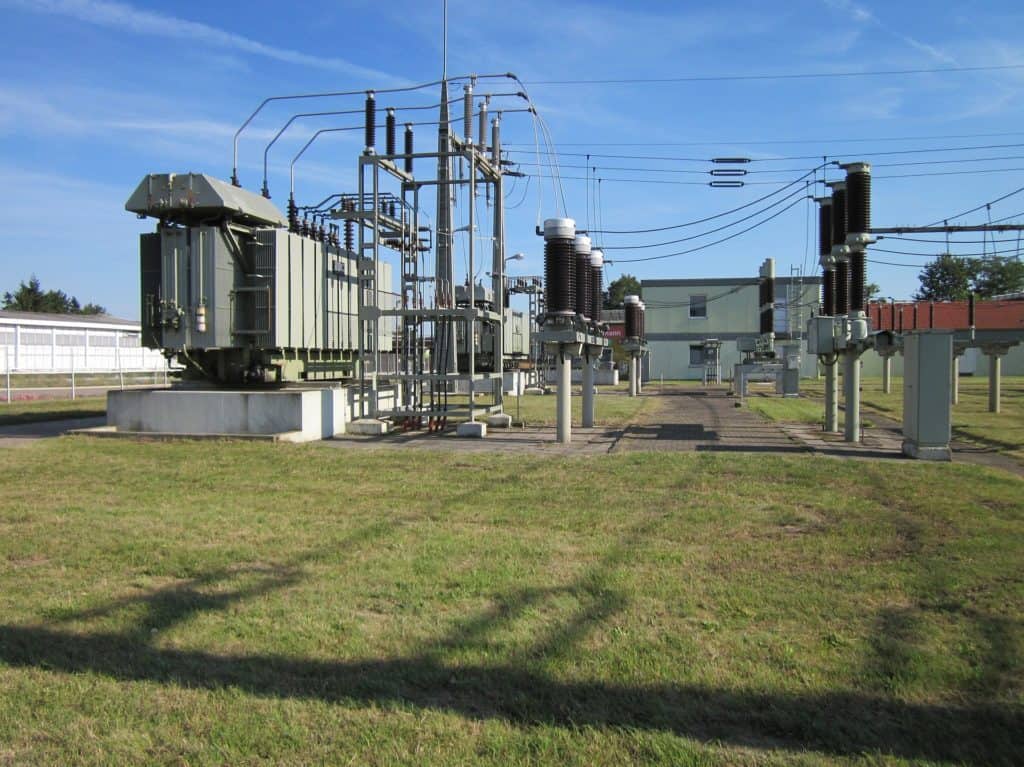
Close to midnight at its meeting on March 17, the Cherry Hill Zoning Board announced its unanimous decision to approve PSE&G’s application for the new Echelon Substation on 850 Evesham Road, where the property occupied by Congregation M’kor Shalom will be subdivided.
The substation will be built on about three acres of a 10.6-acre parcel, and PSE&G has agreed to deed restrict the remaining seven acres of wetlands and wetland buffers so they won’t be developed. The substation is a permitted use for the property because it falls in an institutional zone where utility facilities are permitted.
The substation will serve residents in Cherry Hill and surrounding areas, though the exact breakdown of how many township residents will benefit from the project will be unknown until the station is energized.
During the meeting, five professionals who worked with PSE&G on the project provided testimony on what the project is, why it needs to happen, the kind of variances requested for it, how its lighting would not be an issue for neighboring residents, and how the noise the substation generates will be within range of the permitted levels.
The professionals included Timothy Holmes, a licensing project manager for PSE&G; John Futey, a landscape architect from PS&S; Brian McPeak, a licensed planner from PS&S; Michael Conaway, senior acoustical engineer at Ostergaard Acoustical Associates; and Kyle King, president of K&R Consulting.
Three zoning board members recused themselves due to conflicts, leaving the hearing in the hands of the remaining six members: Wyatt Sklar, Nacovin Norman, Daniel DiRenzo Jr., Joseph DiSalvo, Marshall Spevak and alternate member Anju Pejavara.
King explained that electricity is usually generated far away from areas where energy needs to be, so it is sent in bulk and substations with transformers help lower the voltage and distribute it to homes and businesses. An additional substation was needed to help offset energy going through the Marlton substation, which has been running at 109-percent capacity since 2019, with 117-percent capacity anticipated for 2024.
“When we overload transformers, it’s like running your vehicle well past its red line,” King explained. “It takes life out of the substation and damages the transformers by operating them at too high a temperature.”
The substation will be unmanned, but a PSE&G technician will stop by weekly or every two weeks to check it. Some of the variances requested included putting up an 8-foot wall around the property where only 6 feet is permitted; having two identification signs instead of one; prohibiting parking on the property, because no employees will work there; and a height variance to allow for three, 135-foot monopoles.
Because the substation project involves the removal of 591 trees, PSE&G has agreed to increase the number of re-plantings from 44 to 100 and make a monetary contribution of $300 per tree to a fund for every one that can’t be replanted. In spite of the tree removals, approximately 2,700-2,800 trees will remain onsite leaving a wooded buffer.
While an update to the tree ordinance is in the works, as of the time of the hearing, no tree fund exists for Cherry Hill, a point that was questioned by the board. Should no tree fund happen – and should PSE&G request relief from that condition – Board Solicitor Allen “Sandy” Zeller explained the company would have to come before the board again. He also noted that the current ordinance allows tree removal.
“It doesn’t say anything about the negative air-quality impact or the (sound) impact,” Zeller said. “We all recognize that trees are a valuable commodity … but again, our responsibility is to act within the confines of what the ordinances are that are applicable today.”
Jennifer Carrillo-Perez, an attorney representing PSE&G, emphasized that the tree fund donation was something the company has offered to do voluntarily, and that it is not obligated by ordinance to do so.
Concerns by residents included decreased air quality and an increase in noise due to the removal of trees, as well as the potential for property values to decrease given a substation would replace a forest. With regard to noise, Conaway said it was a misconception that trees absorb a lot of sound and that a significant amount of them would be needed to provide significant noise reduction.
“Based on the geometry here, I would say you would get 1 decibal or less change in increase in sound from traffic noise, which is not regulated by any of the regulation codes,” he noted. “But it might be a 1 decibal increase which is not perceptible to the human ears.”
Moving forward, residents should expect a one-month period of tree removal, with construction beginning in late summer. It will continue through spring of 2023, when electric construction will begin. That work will be completed in spring of 2024.
The substation should be energized with all permits in order and landscaped finished in 2024. During the construction period, there will be about 25 contractors on site at one time.
More project information can be found at https://bit.ly/3tCFlHb. Residents interested in viewing the environmental impact study can do so at https://bit.ly/3JFm9OJ.









